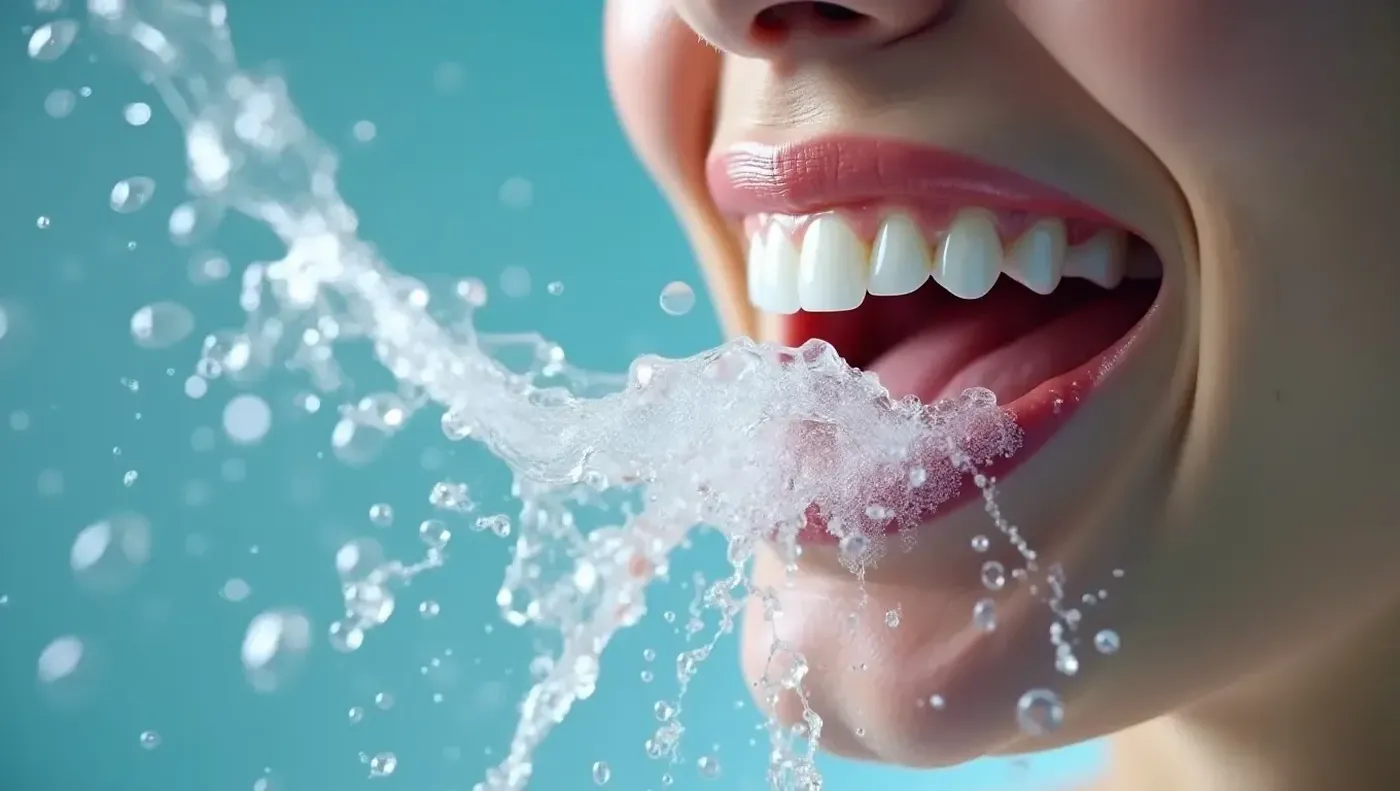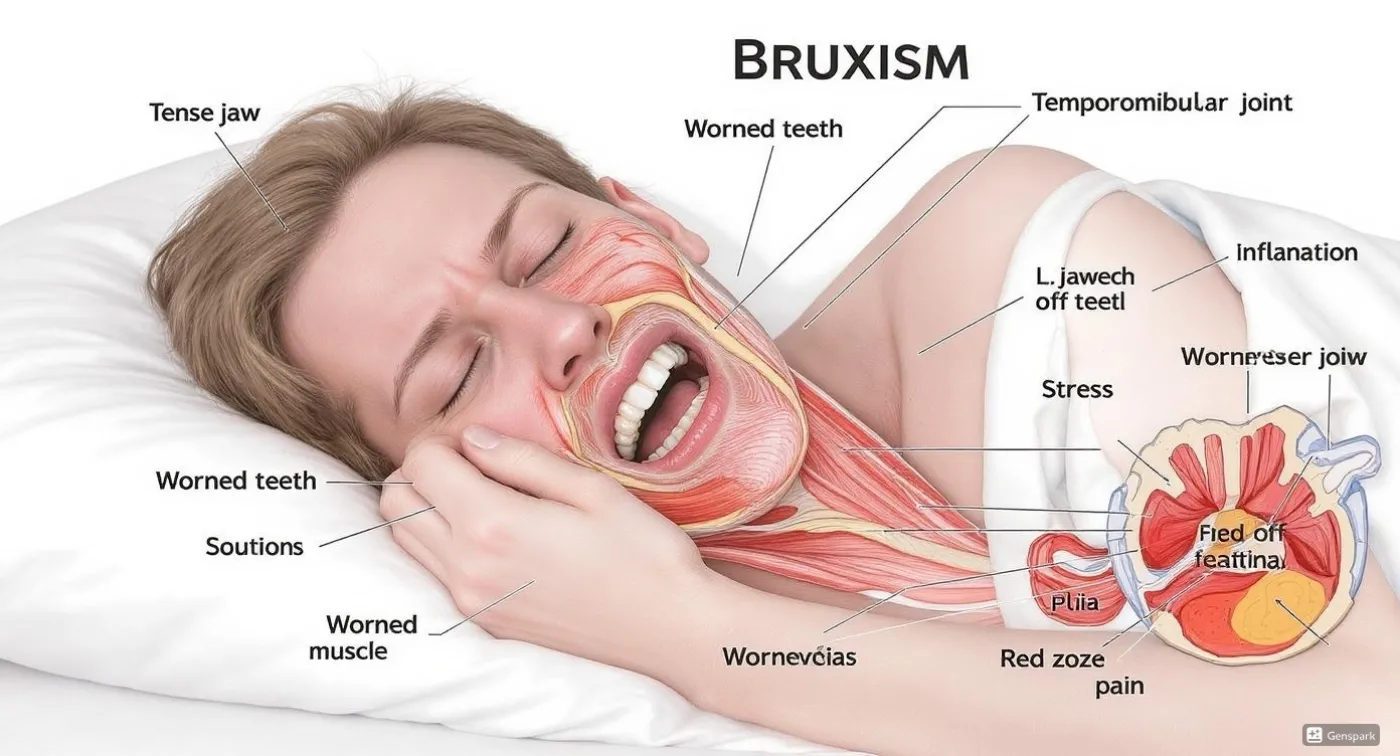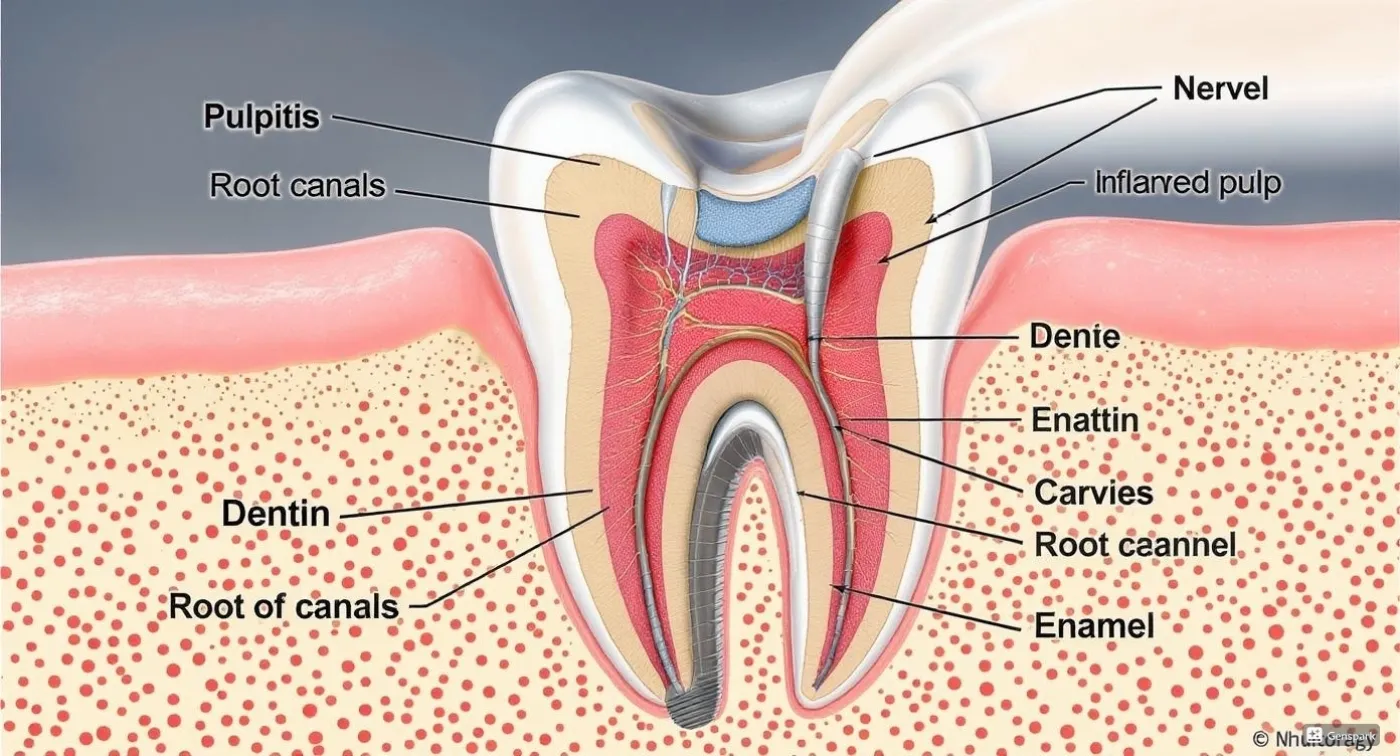Insufficient oral hygiene leads to plaque buildup, cavities, gum inflammation, and even systemic diseases. Regular brushing, flossing, and rinsing with special solutions are key to maintaining healthy teeth. For prevention and treatment of conditions like gingivitis or periodontitis, consult your dentist.

Mouth Rinsing - Prevention of Dental Problems
Insufficient or improper oral hygiene can lead to plaque buildup, bad breath, and cause the development of dental and gum diseases. To avoid these problems, it is important to follow proper oral hygiene rules and regularly perform necessary hygiene procedures.
Why rinse your mouth?
Maintaining oral hygiene should be a regular habit – it is important to brush your teeth daily, use dental floss, and mouthwash. This is essential for keeping your teeth and gums healthy. Without proper care, plaque accumulates on the surfaces of teeth forming a breeding ground for bacteria. The oral cavity normally hosts dozens of types of bacteria, but without timely cleaning, plaque and food residues promote their uncontrolled growth. This can lead to tartar formation, tooth decay, gum inflammation, and even bleeding gums.
Chronic inflammation in the oral cavity can negatively affect the immune and cardiovascular systems and cause various health issues.
Regular professional dental cleaning helps maintain oral health, preserves the natural tooth color, and ensures fresh breath.
When Should You Rinse Your Mouth?
Rinsing with specially formulated solutions helps not only to maintain the health of your teeth and gums but also to address existing problems. Depending on the purpose, rinses can be conditionally divided into:
- Hygienic rinses
- Therapeutic and preventive rinses
Regular use of hygienic rinses can:
- Remove food particles and plaque from hard-to-reach areas of the teeth, helping to prevent cavities;
- Slow down the formation of tartar, which can eventually lead to gum inflammation;
- Strengthen the gums, improve the appearance of teeth, and provide fresh breath.
Dentists recommend therapeutic rinses for conditions such as:
- Stomatitis, gingivitis, and other diseases affecting the gums or oral mucosa;
- Periodontosis and periodontitis;
- Toothache.
Of course, the mouth rinse solution should be prescribed by a dentist as part of comprehensive treatment.
How to Rinse Your Mouth at Home
Many traditional mouth rinse recipes have been used for years. Some of the most effective options include:
- Baking Soda (Sodium Bicarbonate) – a non-toxic antiseptic with mild whitening properties that reduces toothache and gently dissolves plaque. To prepare the solution, mix 200 ml of boiled water at 30–38 °C with 1 teaspoon of baking soda. This rinse can be done daily after meals to neutralize the acidic environment that damages teeth.
- Table Salt (Sodium Chloride) – regular or iodised. Prepare the solution similarly to the baking soda rinse, using 2 teaspoons of salt. Sea salt can also be used (1 tablespoon per 200 ml of water). Salt helps reduce inflammation by drawing out excess fluid from the affected area, stops bacterial growth, and has disinfectant properties.
- Rinse with Baking Soda and Salt – a classic antiseptic solution that reduces inflammation, pain, and bleeding, and disinfects the oral mucosa. To prepare, add 1 teaspoon each of baking soda and salt to 200 ml of warm water, then add 2–3 drops of pharmacy-grade iodine.
- Herbal Decoctions – widely used for therapeutic and preventive purposes. A universal recipe: pour 1 tablespoon of herbs with boiled water at 85–95 °C, steep for at least 30 minutes, then strain and use.
There are also specialised rinses available at pharmacies upon a doctor’s recommendation. Additionally, herbal rinses commonly used include:
- Chamomile – contains flavonoids and essential oils with antibacterial and anti-inflammatory effects.
- Oak Bark – an excellent remedy that protects the mucous membrane. Tannins stop bleeding, strengthen gums, and have antiseptic action.
- Sage – essential oils in sage reduce inflammation and destroy pathogenic bacteria and Candida fungus.
Sometimes a 3% Hydrogen Peroxide Solution (1 tablespoon per 200 ml of water) is used. It is prescribed for stomatitis, gingivitis, enamel darkening, periodontosis, and periodontitis. However, hydrogen peroxide is not recommended for cavities, thin enamel, a large number of fillings, or concurrent use of antibiotics.
Several Important Benefits of Mouthwash
Prevention of Bad Breath
Mouthwash solutions effectively fight the bacteria that cause bad breath. Sometimes people consume foods with strong aromas - such as onions, garlic, and others - that can lead to unwanted odors. In such cases, one of the easiest ways to quickly freshen breath is to rinse the mouth. Most mouthwashes have refreshing flavors, with the most common being mint, menthol, and other natural ingredients.
Antiseptic Action
When gum disease is present, regular tooth brushing can sometimes worsen the condition. That is why dentists often recommend the additional use of mouth rinses. Antiseptic mouthwashes help reduce dental plaque and slow the growth of bacteria that cause inflammation in the gums.
Protection Against Cavities
Fluoride is well known for its ability to combat tooth decay. Many mouthwashes contain sufficient amounts of fluoride compounds, which effectively strengthen tooth enamel and prevent cavity development when used regularly.
Prevention of Dry Mouth
Many people, especially with age, experience dryness in the oral cavity. This can cause irritation and even infection of the tissues. Thanks to special ingredients, some mouthwashes promote saliva production, moisturise the mucous membranes, and prevent dryness.
However, when choosing a mouthwash, it is important to be cautious. Excessive use of such products, especially those containing alcohol, can negatively affect the condition of the gums and teeth. Alcohol, often included in rinses, can dry out the mucous membranes, reducing the natural moisture in the mouth.
Because of this, it is better to choose alcohol-free mouthwashes. They lack the drawbacks of alcohol-containing products and work more gently. Information about the specific ingredients can be found on the product label.
Alcohol-free mouthwashes are also safe for children starting from the age when the child can rinse their mouth independently.
How to Properly Rinse Your Mouth: Technique
Before starting to rinse, it is necessary to thoroughly brush your teeth as this ensures better access of the solution to the mucous membrane of the oral cavity. Next, it is important to follow a certain sequence of actions:
- The solution should be moderately warm. Too hot liquid can burn the mucous membrane, while cold liquid may harm the tooth enamel.
- The duration of rinsing should be from 7 to 10 minutes. Every 30 seconds, spit out the used solution and take a new portion. After finishing the procedure, do not rinse your mouth immediately with clean water - wait at least 10 minutes to allow the solution to work most effectively.
To achieve the best results, it is important to choose the right mouthwash solution and develop a usage plan. A dentist can help with this task. In Korsun dentistry clinics, experienced specialists effectively treat dental and gum diseases, considering the individual characteristics of each patient. It is important to remember that self-treatment can worsen the situation, so timely consultation with a doctor is the best solution.
Preventive Methods in Dental Care
Modern dentistry pays great attention not only to treating existing diseases but also to preventing their occurrence. Prevention is a set of measures aimed at maintaining the health of teeth, gums, and the mucous membrane of the oral cavity.
Preventive methods include:
- Regular dental check-ups. Scheduled visits at least once a year allow timely detection of pathologies at early stages and help prevent complications.
- Education on proper oral care and selection of individual hygiene products. The dentist will help you choose an effective toothbrushing technique tailored to you and recommend optimal care products such as toothbrushes, toothpastes, dental floss, or irrigators.
- Hygienic procedures at home. These include daily toothbrushing, use of dental floss, and regular mouth rinsing after meals, which reduce bacterial levels and prevent plaque formation.
- Use of fluorides. Fluoride strengthens tooth enamel, reduces sensitivity, and lowers the risk of caries. One preventive method is applying a special fluoride varnish to the teeth. The dentist may also recommend a fluoride toothpaste suited to the condition of your teeth.
- Professional cleaning at the dental office. Removal of tartar and bacterial plaque is performed using ultrasonic devices, air and water powder jet (Airflow method), as well as manual scaling instruments. Regular professional cleaning (every 3–6 months) not only supports dental health but also makes your smile noticeably brighter by removing pigmentation.
Prevention is the most effective way to maintain oral health. Timely care and regular check-ups help avoid many dental problems or detect them at an early stage when treatment is still simple and does not require complex interventions.
Request a call
We will contact you to schedule a convenient time for your consultation and connect you with the right specialist
More articles
We have gathered all the most interesting posts from our specialist doctors in our blog just for you
Dental Treatment During Pregnancy: Myths and Facts

Bruxism (Teeth Grinding) and How to Get Rid of It Forever


Request a call
We’ll get back to you shortly!

Leave a Review
Your feedback means a lot to us!




